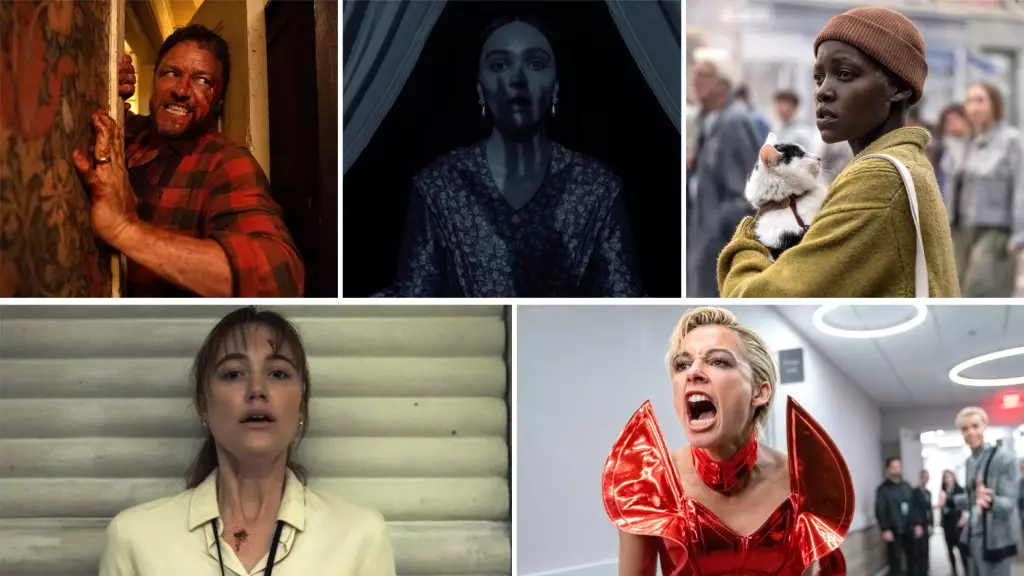The film industry has entered a new era characterized by an intricate web of revenue streams that extend well beyond the initial box office earnings. With the resurgence of Deadline’s Most Valuable Blockbuster tournament, it’s clear that a movie’s success should not solely hinge on its opening weekend numbers. Instead, the full financial picture encompasses downstream revenues from merchandise, home entertainment, and crucially, the burgeoning field of streaming. Traditional studios such as Disney, Warner Bros, and Universal have engaged in strategic partnerships with streaming platforms to enhance their profitability. Meanwhile, companies like Amazon and Apple, known for their theatrical ventures, employ a unique set of criteria that often contrasts with standard profit-and-loss assessments.
This shift emphasizes the importance of analyzing a film’s post-release performance. For 2024, horror films have emerged as a powerhouse genre, demonstrating remarkable profitability and inviting a closer examination of their success stories.
The Horror Phenomenon: Unearthing the Top Performers
Among the standout films from the year is “A Quiet Place: Day One,” a prequel that deviated from the original cast yet still made waves at the box office with an impressive net profit of $83.6 million. Despite the absence of series stalwarts John Krasinski and Emily Blunt due to schedule conflicts, the film attracted audiences with fresh talent like Lupita Nyong’o. The franchise’s legacy and fan loyalty played a pivotal role in this film’s success, illustrating the enduring appeal of a well-constructed cinematic universe.
It’s intriguing how low-budget horror titles are succeeding in a landscape traditionally dominated by big-budget blockbusters. Paramount’s savvy decision to initiate a prequel shows a deep understanding of audience desires, proving that a film’s essence can reverberate even in its absence through captivating storytelling.
Reimagining the Classics: “Nosferatu” Redefined
Another unexpected triumph came from “Nosferatu,” a film that transcended typical genre expectations with a net profit of $70 million. This reimagined classic, directed by Robert Eggers, showcased an auteur’s touch on the Dracula mythos, creating a visually stunning and narratively rich product that drew in a diverse audience. The marketing campaign set a new standard; with a fantastic trailer that amassed 65 million views, the anticipation surrounding the film was palpable.
Eggers, having already established his reputation with works like “The Northman,” used his creative prowess to lure cinephiles, proving that even in a saturated market, innovative storytelling can lead to unparalleled success. The blend of horror with award-winning aspirations captured audiences’ imaginations at a time when holiday releases typically lean toward lighter fare.
Sequels and Spin-Offs: The Appeal of “Smile 2”
Notably, sequels continue to dominate the horror genre’s landscape as seen with “Smile 2,” which grossed an impressive $55.4 million. What’s particularly commendable is how Paramount maintained the original creator, Parker Finn, in both writing and directing roles. This commitment ensured continuity while also allowing for fresh storytelling, as the sequel unveiled new dimensions of the franchise’s eerie undertones.
Paramount’s marketing strategy for “Smile 2” was nothing short of brilliant, integrating a multi-channel approach that included extensive social media engagement and in-world promotional activities that aligned seamlessly with the film’s themes. The narrative expansion into the psychological pressures faced by a pop star amplified the horror aspect while attracting a broader audience demographic.
The Blumhouse Model: Smart, Low-Cost Frights
Blumhouse Productions continues to demonstrate the power of smart financial practices with films like “Speak No Evil,” which managed to achieve a net profit of $50 million from a modest box office opening of $11.2 million. This success can be attributed to Blumhouse’s method of maintaining low production costs while maximizing backend profits. Their strategic approach to remaking existing properties resonates deeply with audiences, encouraging filmmakers to harness existing narratives for modern retellings that strike a chord with contemporary viewers.
The film’s premise—a seemingly idyllic country weekend gone wrong—mirrors societal anxieties regarding trust and human nature, embodying Blumhouse’s knack for tapping into the zeitgeist.
The Unconventional Success of “Longlegs”
Adding to the impressive slate of horror profitability is Neon’s “Longlegs,” which shocked audiences with an avant-garde take on the serial killer genre, recording a net profit of $48 million. This film served as a case study in successfully marketing an unconventional story. By keeping key elements hidden, Neon generated intrigue and anticipation in a film landscape crowded with predictability.
The dark theme interwoven with market-savvy strategies and a dedicated build-up of hype among genre enthusiasts proves that originality and innovative promotion can yield remarkable box office results. It’s evident that Neon has carved out a niche that few can replicate, showcasing the potential for smaller projects to disrupt the market.
The remarkable success of these horror films in 2024 has not only expanded revenue channels for their creators but has also redefined audience expectations and engagement. The genre’s ability to captivate viewers through fresh storytelling and strategic marketing highlights a trend that’s likely to continue thriving in the years to come.

